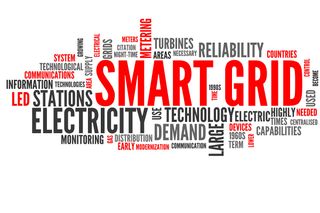Google's Nesting instinct
The search giant's acquisition of Nest shows the growing importance of smart buildings.

Inside the Enterprise: Smart homes, smart buildings and smart cities are one of those topics that technologists love to talk about but that fewer people actually buy.
The idea of a smart home is attractive. Especially at a time when energy prices only seem to rise, being able to connect heating and lighting to sensors and intelligent controllers offers the prospect of cutting bills.
Automating home entertainment, lighting, and even the curtains adds a wow factor to any home improvement project.
But so far, many of the applications of smart technology are more prosaic.
One of the fastest-growing areas is smart meters for energy, linked in to smart grids. This allows energy companies to cut out the cost of physical meter readings and potentially, gives home owners more control over their bills, through a real-time view of energy consumption.
If the smart home market follows the path of smart devices, we could see consumer technology spill over into the workplace, alongside increasingly sophisticated building control systems. There is an opportunity now for CIOs to use the buzz around Google and Nest to make smart buildings part of their remit too.
Put the data from those meters together at grid level, and energy companies are better able to match demand and supply, as well as to offer tariffs or discounts, for example to homes that use most of their energy outside the peak, or to businesses that are willing to reduce energy consumption when demand is high.
Aside from smart grids, though, much of the innovation in the area has centered on new buildings, and commercial buildings in particular. It is simply much easier, especially with wire-based systems of building automation, to fit the technology at the construction stage. Wireless systems are emerging, but architects and building designers may not yet consider them fit for enterprise use.
Get the ITPro. daily newsletter
Receive our latest news, industry updates, featured resources and more. Sign up today to receive our FREE report on AI cyber crime & security - newly updated for 2024.
Commercial buildings, too, tend to have a quicker return on investment from smart systems. Companies not only have to pay for energy, but they have to account for their energy use and carbon footprint as part of corporate social responsibility. And smart systems have other advantages: buildings can be made more comfortable, and more secure.
This, then, is the background to Google's decision to (re)enter the smart home market, through its proposed purchase of Nest.
Nest, founded by ex-Apple employee Tony Fadel is best known for its high-end, intelligent home thermostat. The Nest thermostat is unashamedly aimed at the design conscious buyer. Crafted from aluminum, it is not the type of product that will appeal to volume house builders, let alone to the developers of out of town business parks.
But what may have interested Google about Nest, and what is likely to interest enterprise IT teams, are the data this type of device can gather.
As Bill Ablondi, of Strategy Analytics, points out the Nest thermostat uses learning algorithms to fine-tune and improve a householder's heating settings. This type of technology is likely to be as much of interest to the large manufacturers of commercial-building control systems, as it is to Google.
In the short term, though, the smart home and smart building market is expected to grow rapidly. For smart homes, Strategy Analytics puts the market at around US$30bn (22bn) currently; 65 per cent is hardware. That is expected to grow to $100bn by 2018. "The Google acquisition is likely to not only help that to happen, but possibly speed it up," says Ablondi. Other companies, such as Apple and Microsoft, could enter the market too.
And if the smart home market follows the path of smart devices, we could see consumer technology spill over into the workplace, alongside increasingly sophisticated building control systems. There is an opportunity now for CIOs to use the buzz around Google and Nest to make smart buildings part of their remit too.
Stephen Pritchard is a contributing editor at IT Pro.




